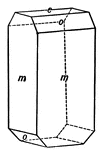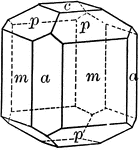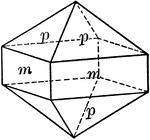
Tourmaline
This crystal of Tourmaline exhibits hemimorphism in the direction of the vertical axis. Its forms are…
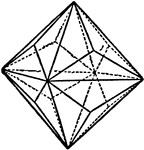
Triakis-octahedron
"This solid is bounded by twenty-four isosceles triangles, and may be considered as an octahedron with…
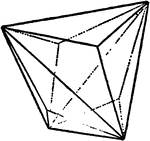
Triakis-tetrahedron
"The hemihedral form {hkk} of the icositetrahedron; it is bounded by twelve isosceles triangles arranged…
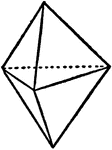
Trigonal Bipyramid
"...bounded by six isosceles triangles...indices as in the hexagonal bipyramid." -The Encyclopedia Britannica…

Trigonal Trapezohedron
"...bounded by six trapezoidal hedra...derivable from the scalenohedron." -The Encyclopedia Britannica…
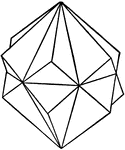
Twin Rhombohedrons
This figure shows two twin rhombohedrons, symmetrical with reference to a prism of the first order,…

Twinned Crystal of Gypsum
"...the two portions are symmetrical with respect to a plane parallel to the ortho-pinacoid." -The Encyclopedia…
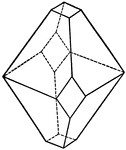
Union of a Pyramid and a Prism of Different Orders
This illustration shows the union of a pyramid and a prism of different orders.
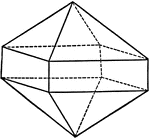
Union of a Pyramid and a Prism of the Same Order
This illustration shows the union of a pyramid and a prism of the same order.

Unsymmetrically Truncated Cube
This form is a cube with its edges unsymmetrically truncated by the faces of the pentagonal dodecahedron.

German Urn
The German urn is a 16th century design made out of cut crystal. It is a small vase with a high foot…

Vesuvianite
"Tetragonal. Prismatic in habit. Often vertically striated. Common forms are prisms of first and second…
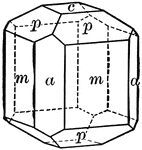
Vesuvianite
"Tetragonal. Prismatic in habit. Often vertically striated. Common forms are prisms of first and second…

Vesuvianite
This form shows a very complex combination of thirteen tetragonal forms occuring on the mineral Vesuvianite:…
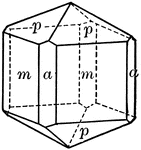
Wernerite
"Tetragonal; tripyramidal. Crystals usually prismatic. Prominent forms are prisms of the first and second…

Wernerite
"Tetragonal; tripyramidal. Crystals usually prismatic. Prominent forms are prisms of the first and second…
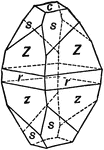
Yttrium Niobate
Also known as Fergusonite, this crystal shows the basal pinacoid, (c); the unit pyramid, (s); and the…
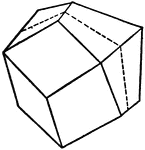
Zinc blende Contact Twin
This figure shows a contact twin of Zinc blende, one of the three simplest isometric holohedrons according…

Zircon
"Tetragonal. Crystals usually show a simple combination of prism and pyramid of the first order. The…
